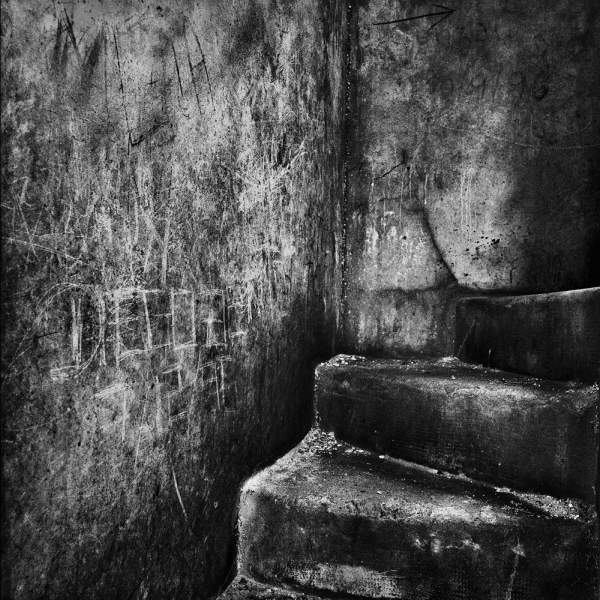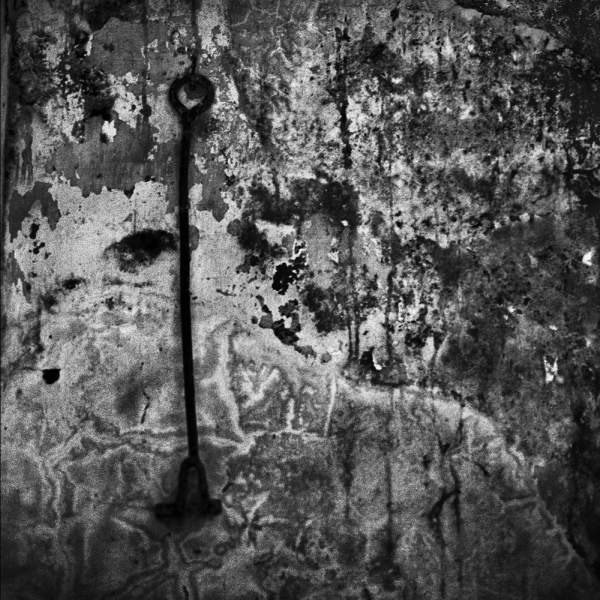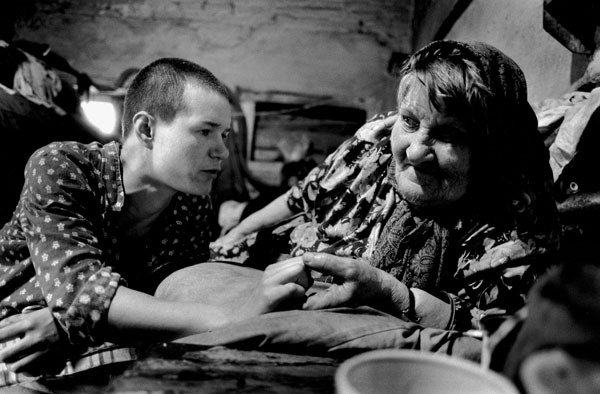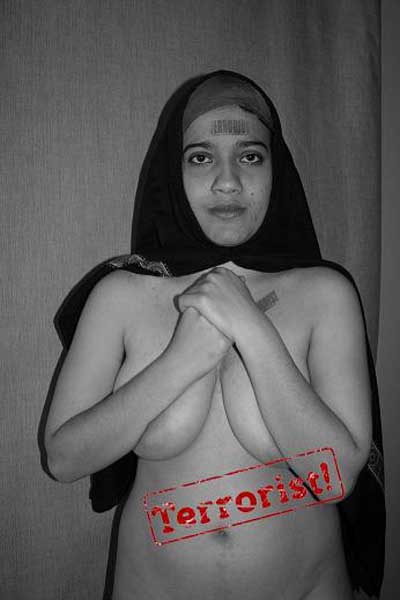Diamond Matters
Kadir van Lohuizen / NOOR
Netherlands

In the 1990s I did a number of photo-reportages during the fighting in Zaire (present-day Democratic Republic of Congo), Sierra Leone and Angola, conflicts which were often dismissed as tribal wars, the final convulsions of the Cold War. By degrees, however, they increasingly became conflicts over raw materials.

The diamond deposits were, for the most part, controlled by the Angolan and Sierra Leonean rebels, who used the gems as a means to buy weapons. Governments got in on the act too and the terms blood diamond and conflict diamond were born.

Nowadays these African countries are, on the whole, at peace, and rebel movements no longer officially play much of a role in diamond exploitation.

Yet working conditions remain appalling. Profits are enormous but very little flows back to the people. The mining companies get big concessions, which improves control of the trade, but robs the local populace of its bread. They are chased off their land and given little, if any, compensation. Besides which the locals have always dug for diamonds and know little or nothing about farming. So in no way are they able to profit from the riches under their feet; worse, they are outlawed. Society is threatened with meltdown.
El Lamento de los Muro
The Wailing of the Walls
Paula Luttringer
Argentina
In the sixteenth and seventeenth centuries it was not unusual to see in Cabinets de Curiosit?s stones on which strange patterns could be observed. It was thought that these patterns were created when the stones absorbed imprints of violence which had taken place nearby.

I have a collection of these stones because they provide me with a metaphor for the marks I feel are inscribed in my own body and in the bodies of other Argentine women who, like me, suffered enforced disappearance and torture during Argentina’s Dirty War thirty years ago. We lived through a storm of history that changed our lives.

Paula Luttringer
We have built our lives on the scars of that trauma, scars that left recognizable patterns on our lives and the lives of our children and loved ones. Since 2000, I have been going back to Argentina, returning to the Secret Detention Centres and photographing walls that still bear witness to the violence enacted on our bodies, searching for other women who lived through enforced disappearance, asking them to talk with me about memories that have lasted for thirty years.

Paula Luttringer Mirrors On The Camino
Uffe Poulsgaard Frandsen
Denmark

- Uffe Poulsgaard Frandsen

Uffe Poulsgaard Frandsen
The photos all relate to the mirror theme in one way or the other. In some of them I am even present in roadside mirrors. I was walking outside the season on a less traveled route and spend almost the entire walk alone, even sleeping alone, in special “refugios” for pilgrims.


Mosque. ? Ali al-Ali
Mapping and deconstructing activity is a critical element of Ali al-Ali?s work. In one series, we see him documenting the construction of a mosque within the bounds of the camp. He took the first picture in 2001, and we see a progression onward into 2008.

Looking towards Palestine. ? Fatmeh Soleiman
Fatmeh Soleiman is profoundly patient, taking one picture at a time – sometimes one a day, other times nothing for weeks. While she resists attaching too much meaning to this work, her two series on exhibition here address the interplay between the reality around her and her will to dream.
Mohammad Amiuny?s work raises questions as to the status of work within the camp, here focusing on young men in particular and their need to make a living. He produced a series of triptychs representing the workspace; this series is in progress.
Nisreen Mushrfih recently started a project on portraiture within the camp. She wanted to honor the persons who are alive and well in the collective memory and memorialized via the photograph.
Susan al-Khatib?s series reveals the diversity of the persons living within the camp. Though she moved to nearby al-Buss camp after getting married, she continues her inventorying of doors, windows, sofas, beds, and drying laundry there.

Political posters. ? Yasser Ibrahim
Yasser Ibrahim wanted to work on Palestine. He set out to photograph the camp elders, or in other words, those who knew the Palestine he never did. He also analyzed the visual environment of the camps. Parties and associations battle each other by raising posters over and next to each other all over walls, frames and even on electricity cables. Herein is a visual chronicle of those battles.
The ultimate aim of our work never was to make professional photographers out of the youth, but rather, to encourage them to use photography as a tool for expression. Questioning images and supporting each photographer?s individual vision is central to our project.Modern Day Slavery
Eduardo Martino
Brazil

A farm producing charcoal at the border of the Amazon forest in Para state, Brazil. The Ministry of Labour is developing a pioneering activity to assign responsability for slavery cases in such farms to the pig-iron producers, as the charcoal is produced exclusively to supply these extremely profitable companies. ? Eduardo Martino
Even though 2007 celebrated the 200th anniversary of the fundamental landmark towards the abolition of slavery (the banning of slave trade by the British parliament in 1807), it has never been as intensively practiced as it is today.

This sixty two year old man was one of the several workers trapped in a farm in south Para. They were working without any employment contract, legal rights or benefits. The working conditions were degrading and the famer's men kept the workers in a debt bondage system. They would charge all the items supplied, from tools to food. They would write down each worker?s expense in a notebook to discount from the worker?s monthly payment, with inflated prices. The water they drunk was the same they used to wash. The authorities were scheduled to raid the farm, after one worker managed to escape and denounce the farmer. The farmer heard about it and sent all the workers away. So the authorities could no longer have the chance to reinforce the law as there are no contracts. The workers became unemployed and without money and scared about the farmer's possible revenge. They say his brother is a gunman. ? Eduardo Martino
Modern-day slavery is often done via a fraudulent debt and my documentary examines the Brazilian case. Slavery is the most extreme case of lack of freedom. Being Brazilian, I feel compelled to do something about it. I hope my images will work as a little contribution to fight this horrible problem.

The Ministry of Labour's inspectors are developing a pioneering activity, linking the exploitation of poor workers making charcoal at the edges of the Amazon forest, in one side of the production chain, to profitable pig-iron producers in the other. Here they are inspecting a big company in Para State. The managers of this company were arrested the following day, as the Federal Police found over 50 truckloads of illegal charcoal in the company?s premises, destined to pig-iron production. The company was also fined heavily by the environmental agency IBAMA. ? Eduardo Martino Lalon’s Freedom
Sascha Akhtar
Pakistan

The Fluttering Bird Inside ? Sascha Akhtar
As a wordsmith, I was inspired by the poetic subject matter put forth as a starting point for the artists. I kept returning to the poem as I was planning which images to send, and each time I returned I realized that the poem was speaking deeply to me on another inexplicable level, just as the poet himself is talking of things that are not quite explicable.

Shackles of my mind ? Sascha Akhtar
My work has always conversed with the ideas of body and soul, the self and universe. I am a symbolist photographer, and I use words to complete the symbolism. My images hope to embody Lalon?s view of freedom i.e ? they too do not depict freedom as an entity itself, but as lived experience. Each one of my photographs is an experience. In this way a synergy was created between the words of the poet, the english translation and my images.

Lalon Fakir ? Sascha Akhtar
Once I started writing on them, there was no looking back. I found the experience freeing in itself and poignant. I created a poetry of images to complement the music of the words. As a spiritualist, this came as a flow. We may be human and in our bodies but there is an essence inside us that struggles to be free, and that essence is the nur or light that is behind our eyes, or the soul.Neppovo
Alexandra Demenkova
Rumania
Neppovo is a village about 100 km away from Saint-Petersburg where one of the regional mental hospital is situated. It is also one of the two in the region with farms. The patients of the asylum work four hours a day, two in the morning and two in the evening of hard labour. In the timetable it is called work therapy.

? Alexandra Demenkova
Patients work in the laundry, help in the canteen, water flowers, tend cattle, clean the pigsty. They also do all the work in the quarters and make frequent cups of tea. They are meant to get paid for some of the jobs they do, but they earn very little and the sum depends on the brigadier, the woman responsible for the work. They see little of the products of their labour, horns and hoofs, as they say. The meat goes to the brigadier, the head of the territory or somebody else.

? Alexandra Demenkova
They have no opportunity to leave even for the week-ends and are punished for bad behaviour, for an attempt to escape or for unwillingness to work by several days in a cell and aminazine. Many of them have lived there all their lives and fully realize that they are imprisoned for the rest of their lives. There is no way out.

? Alexandra Demenkova
One of the guys believes he will leave one day, as his grandmother, on her deathbed had told him there were relatives to take care of him and his brother. One of the girls, Luba, who was only 25 then, once told me: We know practically nothing of ourselves. They (doctors) know everything of us. And we are just to live, to work and to go to the bathhouse from time to time. Free people don?t live like that, do they?The Face of a Terrorist?
Fateme Gosheh
Sweden
Salim is an old man from Jordan – homeless in Stockholm or maybe its the young student from Iraq with the name Usama…

? Fateme Gosheh
All these people are Muslims. This young woman was born and raised as a Muslim. Her name – ?Aisha?, is associated with Islam. She, as others – have nothing to do with Islamist terror ? but is victimized by the cause.

? Fateme Gosheh
Hate has taken us over. In this world full of prejudices, it seems that all Muslims are potential killers.
It is not so easy to feel free when there is so much prejudice against you.
As a person involved in art who has grown up in this part of the world, I have something to discus, prove my involvement for peace, not hate.

? Fateme Gosheh
With my photography project ?The face of a terrorist?? I want to show the faces of the innocent, ordinary people who have been victimised by the madness and delusion of others.Checkposts
Eddie Gerald
Isreal

Many Palestinian cars carry the Intifada scars in the West Bank? Since September 2000 the Israeli Defence Force have restricted the ability of Palestinians to travel, work, and go to school to a degree unprecedented in the 40-year Israeli occupation of the West Bank and Gaza Strip. The internal closure separates Palestinian localities from each other and results in the hampering or complete freezing of the economic, political, educational, medical, and social service necessary for a healthy society. ? Eddie Gerald
“More than 550 Israeli military checkpoints and blockades restricted or prevented the movement of Palestinians between towns and villages in the West Bank. The Israeli authorities continued to expand illegal settlements in the occupied West Bank and to build a 700-km fence/wall,

Since September 2000 the Israeli Defence Force have restricted the ability of Palestinians to travel, work, and go to school to a degree unprecedented in the 40-year Israeli occupation of the West Bank and Gaza Strip. The internal closure separates Palestinian localities from each other and results in the hampering or complete freezing of the economic, political, educational, medical, and social service necessary for a healthy society. ? Eddie Gerald
80 per cent of which runs inside the West Bank. For this purpose, large areas of Palestinian land were seized or rendered inaccessible to Palestinians, depriving them of their source of livelihood and restricting their access to their workplaces, education and health facilities and other necessary services.

Medical assistance of a Palestinian mother by Israeli volunteer doctor. Often times, Palestinian patients in desperate need of treatment are denied access to care in Israel and other main cities in the west bank for "security reasons." In such situations, PHR intervenes on behalf of such Palestinian patients and is very often successful in securing permission for the individual to enter Israel and receive the care needed. Physicians for Human Rights-Israel (PHR) a non-profit, voluntary organization was founded in 1988 at the height of the First Intifada by Israeli and Palestinian physicians who realized that the issue of human rights and medical care are integral parts of the same struggle. ? Eddie Gerald.
Palestinians were barred from or had restricted access to more than 300km of roads in the West Bank, which were mostly used by Israeli settlers.” From Amnesty International report, May 2008.
The images are from March 2008, when I set out walking on one of the old pilgrimage routes in northern Spain, collectively known as “The Camino”. The collection, called “Mirrors On The Camino”, was inspired by the idea that a photograph mirrors the soul of the photographer as well as the world in front of the camera.
Uffe Poulsgaard Frandsen
The walk was done at a time where I felt trapped by my own thoughts and unable to be the person I wanted to be. When I set out, I had no particular goal in mind with the trip except being alone and photographing whatever I happened to find. Looking back now, however, I can see that these images represents a search for something in myself. A search to find freedom in my mind, to become who I want to be and understand that person. I am still searching
HOW BEAUTIFUL IS PANAMA!
Photographers: Ahmad al-Khalil, Ali al-Ali, Fatmeh Soleiman, Mohammad Amiuny, Nisreen Mushrfih, Susan al-Khatib, Yasser Ibrahim
Curator: Yasmine Eid-Sabbagh/Arab Image Foundation (Lebanon)
Palestine
Burj al-Shamali is a particularly poor but calm camp established in 1956 to house part of the influx of the Palestinian population fleeing their country?s naqba. South of the city of Tyre, the camp is about one hour?s drive from Beirut proper, its population mainly made up of persons who hail from the north of Palestine. Though all primary Palestinian parties are represented in the camp, it is not a representative crossroads nor microcosm of the conflict going on in Palestine.
It was in 2006 that Abu Wassim, director of the Burj al-Shamali socio-cultural centre of Beit Atfal Assoumoud, accepted to host our ?atelier? on the top floor of his building after having watched us repeatedly run courses for the past five years. To this day, this space is essential to our work; the youth come here regularly to edit and discuss their photographs. It was in fact there, working together, that we came to select the photographs presented in this exhibition
Ahmad al-Khalil has produced several different series of views of the camp. His photographs are highly aesthetic; he plays with shadows, the light of the sunset, and a variety of unusual perspectives. In the end, he opted to show one of his series, a rumination on the borders of the camp.

The West, whether exploiting or exploring or even espousing ‘freedom and democracy’ and mouthing profundities in the name of ‘human rights’, has a lot to answer for the injustices being perpetrated or atrocities being committed around the globe. The so-called ‘rule of law’ simply means their laws, which are framed and beingimposed for their benefit and not for any fairness for the mankind!
And ‘our leaderships’ and ‘our governments’ go on doing ‘their’ bidding in the name ‘development and progress’!
its a great collection and great effort you give to us.
we learn more from u.
Thanks
A time has come to resist the western hegemony with the thoughts, voices and movements from the majority world intelligentsia. Chhobi Mela V is going to be an assertion in these regard through the efforts of visual community from many parts of the globe, I guess.